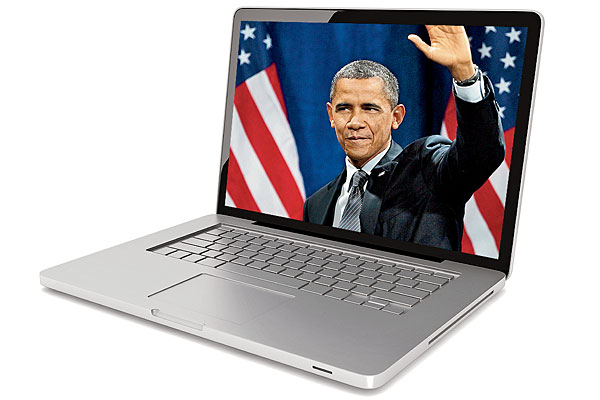
As you surfed the Internet this summer, you may have unwittingly become part of the 2012 presidential campaign. Perhaps you came across an invitation to wish Barack Obama a happy Father’s Day and chose to sign the proffered greeting card, leaving behind your name, ZIP Code, and e-mail address. Or maybe, while searching for the latest data on unemployment, you encountered an ad from Mitt Romney highlighting the president’s blithe pronouncement that “the private sector is doing fine.” Looking for a little more information, you clicked on the ad. Gotcha!
When you visit the websites of various candidates—from the presidential race on down—you leave behind invaluable bits of information that campaigns aggregate with other scraps of data to target voters as never before.
The Obama team proved proficient at gathering voter stats in 2008, but David Axelrod, one of the president’s top advisers, has characterized those efforts as “prehistoric” compared with what’s happening this time around. Now the emphasis is on assembling all that information into one vast, crunchable file that Obama’s tech geniuses (see below) can use to help the president close the deal.
You already know about the cookies many websites routinely leave on your computer that can help those sites monitor your browsing habits and decide which online ads to offer you in the future. The presidential campaigns in particular are busy merging that digital information with details gathered from your voting records and Facebook page. They’re factoring in such things as which magazines you subscribe to and what kinds of TV shows you watch. And they’re adding intelligence gleaned from interviews with people like you conducted by canvassers around the country.
While such activities may strike citizens wary of Big Brother as somewhat sinister, data experts insist that they are only focusing on the customer, as any good salesperson does. “You need to listen to the consumer [voter] more than you need to do anything else,” says Cass Baker, an executive vice president at Leapfrog Online, a Chicago company that uses online data to help boost its clients’ bottom lines. “It allows for an amazing, more refined message.”
Obama’s Tech Stars
These three Chicagoans are key to the campaign
 |
 |
 |
| RAYID GHANI Chief scientist Formerly of Chicago’s Accenture Technology Labs, Ghani develops algorithms to fine-tune messages to voters. |
HARPER REED Chief technology officer Reed has also served as CTO for the hot T-shirt company Threadless. |
MICHAEL SLABY Chief integration and innovation officer The former digital guru at the PR giant Edelman was the campaign’s chief technology officer in 2008. |
RELATED: Chicago's Winners and Losers in Election 2008 »
Obamaspeak
A sampling of the patois of the president’s reelection campaign
DREAMCATCHER
The nom d’élection for the Rayid Ghani–led effort to effectively mine online data
MICROLISTENING
Minutely dissecting voter data (coined by Obama consultant Tim O’Reilly of O’Reilly Media)
NARWHAL
Code name for the campaign’s plan to gather voter info into an easily cross-referenced database
The Big Number
27.4 million
Number of people who like Obama on Facebook (Only 2.6 million like Romney) as of post time


